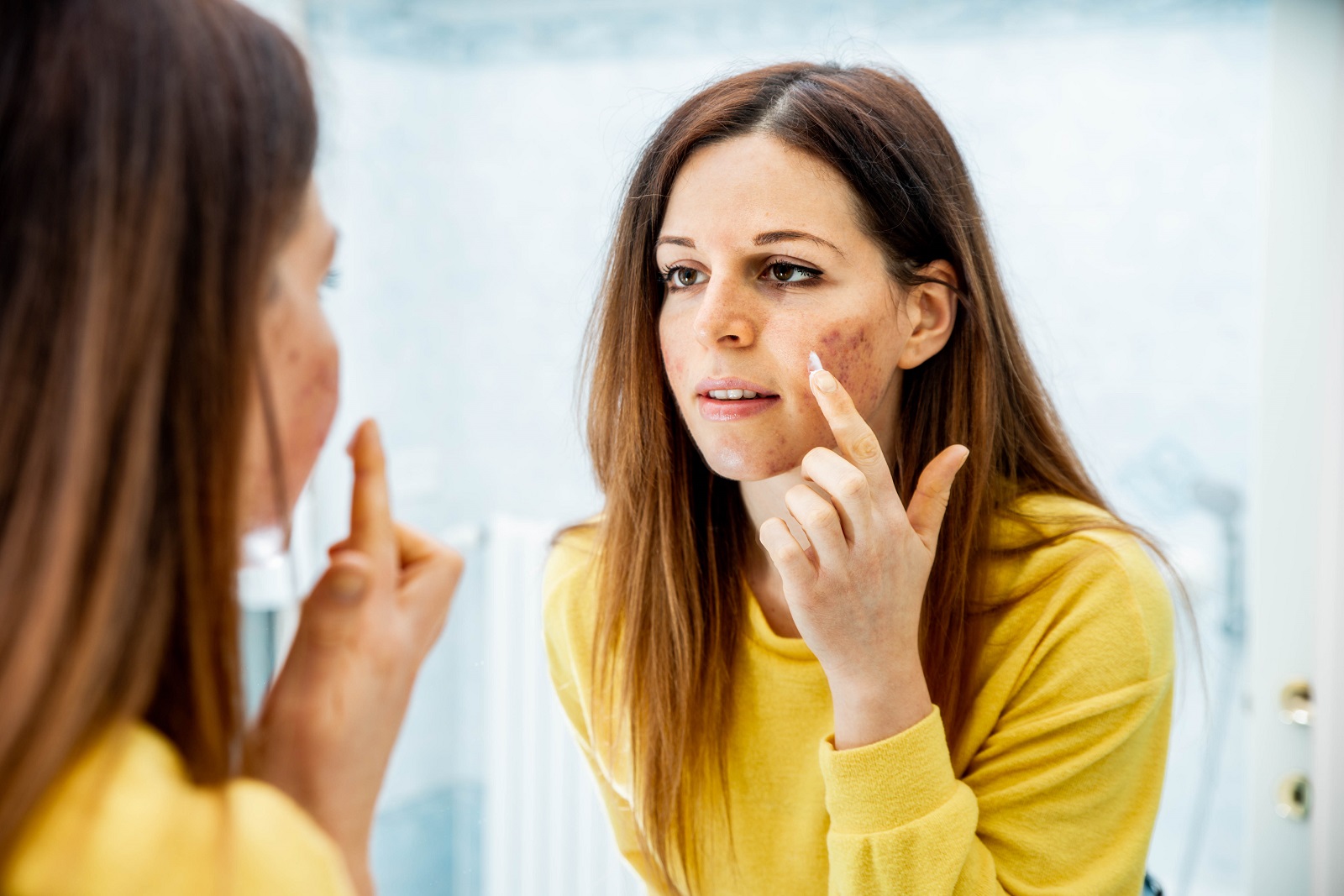Acne is a very common condition that affects between 40 and 50 million Americans. Some people have mild acne, while others have severe acne with cysts and nodules. If your acne is severe, it may require treatment by a doctor who specializes in skin conditions (dermatologist) or an MD who specializes in internal medicine or pediatrics (primary care physician).
Acne treatment may be over-the-counter or prescription, depending on the type of acne you have.
The type of acne treatment you need depends on the severity of your acne. Over-the-counter (OTC) products are available for mild cases, while prescription medications are used in more severe cases.
Some people need both OTC and prescription treatments to achieve their best results.
How to treat acne
- Use a mild cleanser that’s oil-free.
- Apply a moisturizer that doesn’t clog pores, like CeraVe or Eucerin (both are available at drugstores).
- Don’t touch your face with dirty hands, because bacteria from your fingers can cause breakouts when it gets into the skin around your mouth and nose.
- Don’t pick at acne, squeeze pimples or use harsh products on your skin–they’ll only make things worse!
Spot treatments for pimples
Spot treatments are a great way to get rid of pimples fast, especially if you have a big event or photo shoot coming up. They’re also useful for helping with smaller blemishes that crop up during the day (like those annoying whiteheads).
Spot treatments contain ingredients that help kill bacteria and reduce inflammation, which can speed up healing time. When you use a spot treatment, it’s important to follow the instructions on the package carefully so that you don’t overdo it! Most spot treatments have instructions for how often and how long before they should be applied–make sure you read these carefully before using any new product on your skin.
Some common ingredients found in acne spot treatments include salicylic acid (BHA), benzoyl peroxide (AHA) and tea tree oil (anti-fungal properties).
Prescription topical treatments
Prescription topical treatments are applied directly to the affected area. They include retinoids, benzoyl peroxide and antibiotics. Prescription topical treatments can be expensive and may cause irritation or redness (especially if you’re prone to flushing).
Antibiotics and birth control pills
As with any medication, it’s important to understand the possible side effects and risks.
- Antibiotics can cause diarrhea, nausea, vomiting and stomach pain.
- Birth control pills may cause headaches or breast tenderness in addition to acne improvement.
Intralesional injections (subcision)
Intralesional injections (subcision) are a relatively new treatment for acne scars. The procedure involves injecting anesthetic into the skin to numb it, then making tiny incisions in the depressed areas of your skin with a needle. These wounds are then drained of excess material and sealed with sutures or glue.
The procedure takes about 10 minutes and can be done in your doctor’s office with either local or topical anesthesia (with numbing cream). In some cases, multiple treatments may be necessary before you see results; however, many people report improvement after just one session!
Laser and light therapies (photodynamic therapy)
Photodynamic therapy (PDT) is a treatment that uses light to kill acne-causing bacteria. It’s most often used to treat moderate to severe acne, but it can also be used in combination with other treatments like antibiotics or retinoids.
It takes place in the doctor’s office or clinic and involves a gel being applied to your skin before you’re exposed to blue light for about 20 minutes (the exact time varies depending on the type of phototherapy). The blue light helps activate the acne medication in your body so it destroys more P. acnes bacteria than would be possible without it.
Chemical peels, microdermabrasion and dermabrasion
Chemical peels, microdermabrasion and dermabrasion are all used to treat acne. These are the most common of these treatments but they’re not for everyone. If you have sensitive skin or have had problems with previous chemical peels then it is best to avoid them altogether. Microdermabrasion and dermabrasion are more aggressive methods of exfoliation that involve removing layers of dead skin cells from your face in order to reveal fresher skin underneath. The down side is that there’s a greater risk of irritation or scarring if done incorrectly so make sure you see an expert before getting started!
There are many ways to treat your acne, so see a dermatologist if you’re not getting better with over-the-counter products.
Acne is a common condition that affects people of all ages. It’s most common in teenagers, but can also affect adults.
There are many ways to treat your acne, so see a dermatologist if you’re not getting better with over-the-counter products.
Types of acne:
- Mild (noninflammatory): usually blackheads or whiteheads; can be treated with over-the-counter products.
- Moderate (inflammatory): papules (small red bumps) and pustules (whiteheads); may need prescription medicines for treatment.
- Severe (cystic): large painful nodules under the skin; requires treatment by a doctor as soon as possible
Conclusion
We hope this article has helped you understand the different types of acne and how they can be treated. If you’re still not getting better with over-the-counter products, see a dermatologist. They will be able to prescribe medications that are best for your specific type of acne as well as offer other treatment options such as photodynamic therapy or intralesional injections (subcision).
